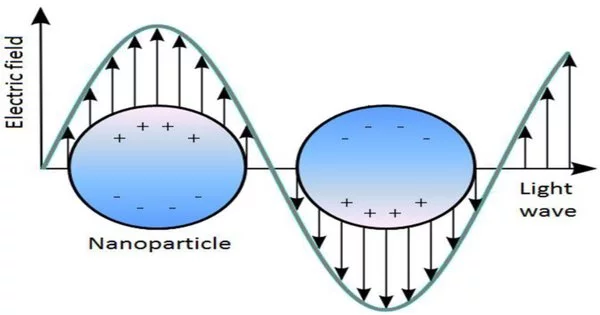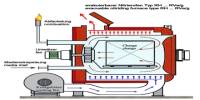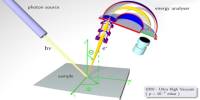The confinement of a surface plasmon in a nanoparticle of size comparable to or smaller than the wavelength of light used to excite the plasmon results in a localized surface plasmon (LSP). When light strikes a small spherical metallic nanoparticle, the oscillating electric field causes the conduction electrons to oscillate coherently. Coulombic attraction between electrons and nuclei produces a restoring force when the electron cloud is displaced relative to its original position. The electron cloud oscillates as a result of this force.
Because of their strong interaction with visible light, LSPs are commonly observed in noble metal nanoparticles such as gold or silver. The resonance frequency of LSPs is affected by a variety of factors, including the nanoparticle’s size, shape, composition, and surrounding environment.
Excitation of LSPs can cause a variety of interesting phenomena, including enhanced local electromagnetic fields, scattering, and light absorption. Because of these properties, LSPs are extremely useful in a variety of fields, including plasmonics, nanophotonics, sensing, and surface-enhanced spectroscopies.
The frequency of oscillation is determined by electron density, effective electron mass, and the size and shape of the charge distribution. The LSP has two important effects: it greatly increases electric fields near the particle’s surface and increases optical absorption at the plasmon resonant frequency.
LSPs’ enhanced local electromagnetic fields can be used for applications such as surface-enhanced Raman scattering (SERS), in which the presence of metallic nanoparticles significantly amplifies the Raman signals of nearby molecules, allowing for highly sensitive molecular detection.
LSPs can also be used to control and manipulate light at the nanoscale in plasmonic waveguides and nanoantennas. Researchers can engineer the properties of LSPs to achieve specific functionalities such as subwavelength light confinement or directional light scattering by tailoring the size, shape, and arrangement of metallic nanostructures.
The shape of the nanoparticle can also be used to tune surface plasmon resonance. The metal dielectric constant can be used to calculate the plasmon frequency. The enhancement decreases rapidly as one moves away from the surface, and the resonance occurs at visible wavelengths for noble metal nanoparticles. Brilliant colors are produced in metal colloidal solutions by localized surface plasmon resonance.
Overall, the study and utilization of localized surface plasmons have led to advancements in a wide range of applications, including biosensing, solar energy harvesting, information processing, and optical metamaterials, opening up new possibilities for nanoscale light-matter interactions and device design.
















